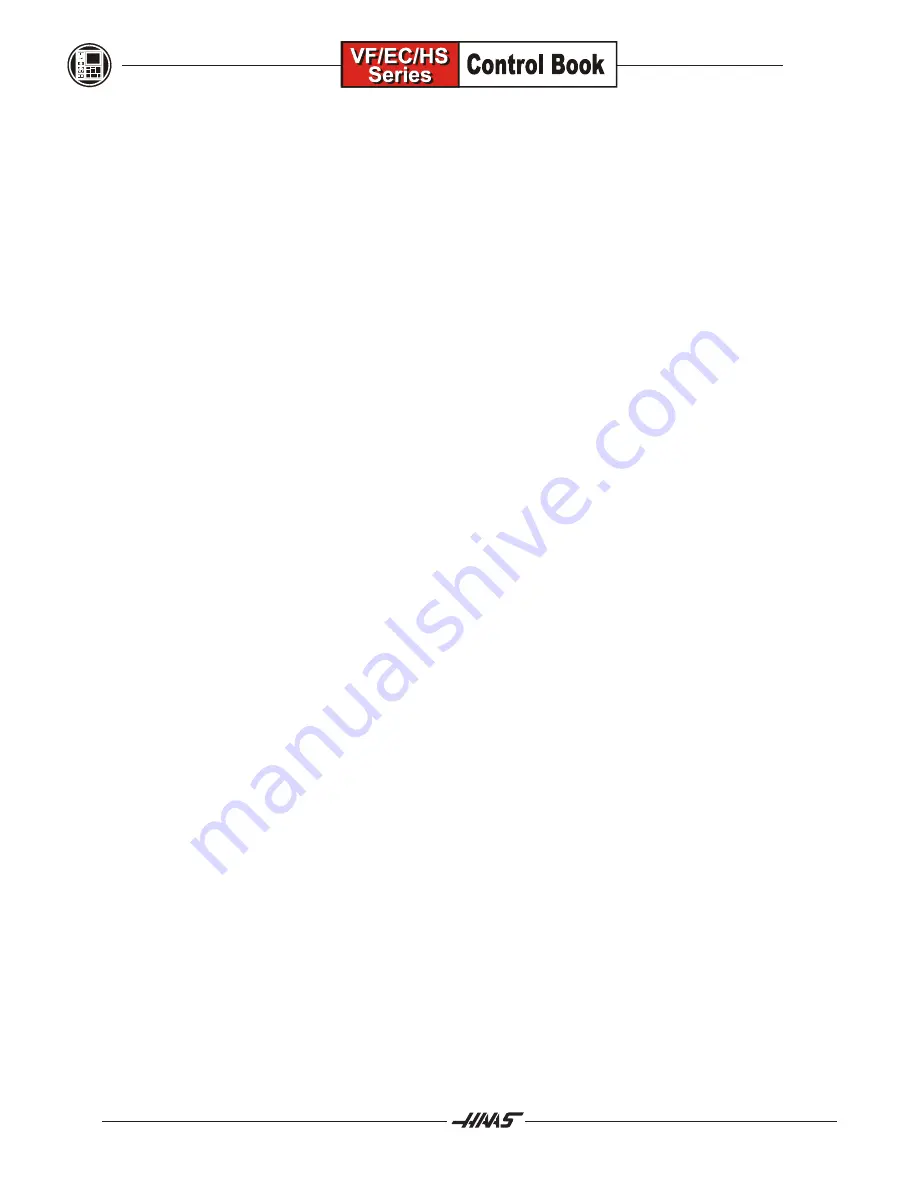
112
January 2004
D
Alarm History saved to RS-232 and Disk
- This is a new feature. From the alarms history screen, the user
can now save the alarm history (the last 100 alarms) to a floppy disk file by entering a file name and pressing
F2. Alternately, the alarm history can be sent to a PC using RS-232 by pressing SEND RS232. The output
from either method will contain a percent sign (%) on the first and last lines.
(Any Mill control ver. 10.22 and above; any Lathe control ver. 4.02 and above)
MESGS
D
Leaving Messages
- You can enter a message in the MESGS display for the next person, or for yourself. It
will be the first display shown when you power up the machine,
if there are no alarms
other than the usual 102
SERVOS OFF alarm. If the machine was powered down using
EMERGENCY STOP
, the MESGS display will
not show up when you turn the machine on again. Instead, the control will display the active alarm generated
by the emergency stop. In this case, you would have to press the
ALARM/MESGS
key to view a message.
EDIT
D
The Edit Display
- When you press
EDIT
, the first display you see is the Advanced Editor display. This
display has menus in the upper left that allow the user to access features of the Advanced Editor. The menus
are entered into by pressing
F1
. Pressing the
PRGRM/CONVRS
key while in Edit will bring up and display the
program only, to edit. Pressing
PRGRM/CONVRS
a second time will bring up the Quick Code editor, and again
will display Visual Quick Code. Quick Code can also be accessed from the Advanced Editor within the F1:
HELP pull-down menu.
D
Advanced Editor Menus
- Pressing
F1
in the Advanced Editor will activate the menus. The menu selections
are made with the jog handle, turning it either clockwise or counterclockwise, or with the cursor arrow keys
(
p
q
t
u
). Press the
WRITE/ENTER
key to activate the cursor-selected menu item.
D
Advanced Editor On-line Help
- In the Advanced Editor, after pressing
F1
to access the menus, on-line
Help is displayed in the lower right corner of the screen. To scroll through the Help text, use the
PAGE UP
,
PAGE DOWN
,
HOME
, and
END
keys (remember, the cursor arrows move you through the menu items, not the
Help text). In addition, if the
F1
key is pressed during the use of a menu option, the Help text is likewise
displayed. Pressing
F1
again will exit the Help display.
(Any Mill Control ver. 9.32 and above; any Lathe Control ver. 2.16 and above.)
D
Advanced Editor Searching
- When the SEARCH menu FIND TEXT item is used and the text is found, the
next press of
F1
to activate the menus will automatically select the FIND AGAIN option. Likewise, when the
SELECT TEXT function on the EDIT menu is used, the next activation of the menus will cause the COPY
SELECTED TEXT option to be highlighted.
D
Advanced Editor Block Editing
- In the 80 column Advanced Editor you can select a program block and
copy it to another location, move it to another location, or delete it. To start the block definition, press
F1
to get
into the menus, use the jog handle or the cursor arrows to select to select the EDIT menu and the SELECT
TEXT menu item, then press
WRITE/ENTER
. Another way to begin text selection is to put the cursor on the
program line where you want the selection to begin and press
F2
. In either case, once youve defined the
beginning, you then use the cursor arrows to go to the line where the selection should end, and press
F2
or
WRITE/ENTER
. This will highlight the section you want to copy, move, or delete. Then, use the EDIT menu (or
EDIT
hot keys), to COPY SELECTED TEXT (or press
INSERT
to copy), MOVE SELECTED TEXT (or press
ALTER
to move), or DELETE SELECTED TEXT (or press
DELETE
) for the selected block.
Summary of Contents for VF Series
Page 1: ...January 2004...
Page 7: ...V I January 2004...
Page 125: ...118 January 2004...
Page 126: ......























